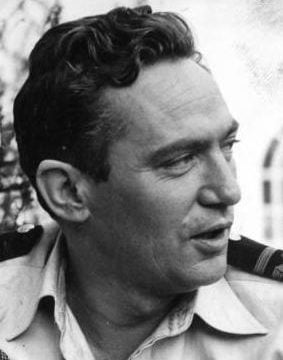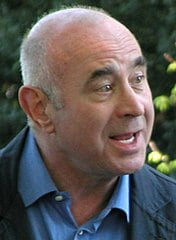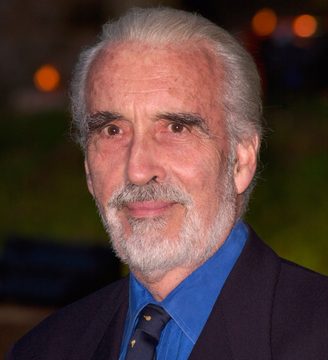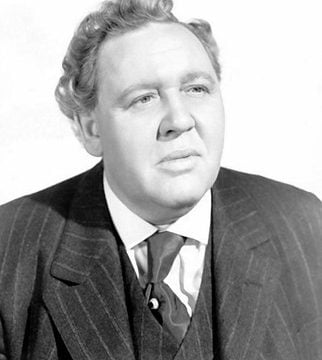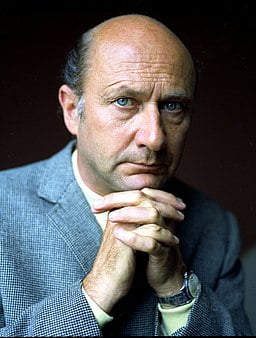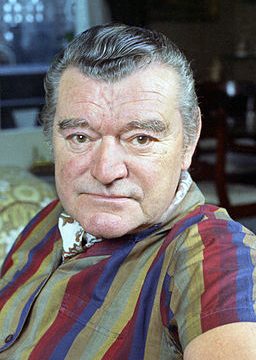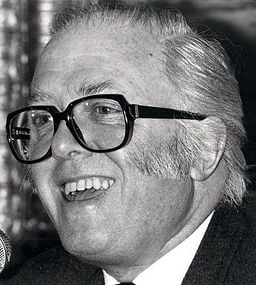
Early Life and Career
Richard (Samuel) Attenborough was born on 29 August 1923 in Cambridge. He was the eldest of the three sons of Mary and Frederick Levi Attenborough. His father was a scholar and academic at Emmanuel College, Cambridge. While he was still a young child the family moved to Leicester. His mother, a senior figure in the Marriage Guidance Council, became president of Leicester’s Little Theatre. Thus, Attenborough’s interest in acting was piqued from an early age. He went on to be educated at Wyggeston Grammar School for Boys in Leicester.
In 1941, Attenborough made his stage debut at Leicester’s Little Theatre. Later that year he was awarded a scholarship to attend the Royal Academy of Dramatic Art (RADA). He graduated from the acting school the following year, making his film debut in Noel Coward’s In Which We Serve (1942).
In 1943, during the course of WW2, Attenborough joined the Royal Air Force. After completing initial training he was transferred to the newly formed RAF Film Production Unit at Pinewood Studios. He was one of the volunteers who flew on operations over Europe in order to film the outcome of Bomber Command’s sorties. He later starred as a cadet pilot in the RAF propaganda film Journey Together (1945). Attenborough was demobbed from the Royal Air Force in 1946.
Acting Fame
Attenborough’s breakthrough film role came as the psychotic gang leader Pinkie Brown in a big screen adaptation of Graham Greene’s novel Brighton Rock (1948). He went on to star as a number of similar dubious characters in such films as London Belongs to Me (1948) and Morning Departure (1950). Throughout the 1950s, Attenborough became a prolific performer on the big screen. He increased his acting range when he ventured into comedy in the likes of Privates Progress (1956) and I’m All Right Jack (1959). In 1960, he produced his first film and also starred in the Angry Silence.
In 1963, Attenborough featured in his first major Hollywood film in an ensemble cast of The Great Escape. The role of Squadron Leader Roger Bartlett was based on the real-life prisoner-of-war exploits of Roger Bushell. It is certainly one of his most memorable on-screen portrayals. He then went on to win a Golden Globe for Best Supporting Actor in the US navy epic The Sand Pebbles (1966), starring Steve McQueen. He repeated the feat the following year in the musical comedy Doctor Doolittle (1967), starring Rex Harrison.
Directorial Career
Attenborough made his directorial film debut in a screen adaption of the hit stage musical, Oh! What a Lovely War (1969). From then onwards his acting career tended to take a back seat to his directing ambitions. However, he did notably star as the British wartime serial killer “John Christie” in 10 Rillington Place (1971). Later in the 1970s, he direct two epic films, namely Young Winston (1972) and A Bridge Too Far (1977). The first was a biopic based on the early life of Winston Churchill, which starred Simon Ward. The latter, with a large ensemble cast, told the story of Operation Market Garden in World War II.
The 1982 film “Gandhi” was a personal project for Attenborough, and a film that he had wanted to make for many years. The film won eight Oscars, including those for best picture and best director. He then went on to direct the musical comedy-drama A Chorus Line (1985), the anti-apartheid film Cry Freedom (1987), and the Charlie Chaplin biopic Chaplin (1992). The following year he directed another biopic, Shadowlands (1993), starring Anthony Hopkins and Debra Winger.
Career Summary
In 1993, after a 14-year hiatus, Attenborough made a triumphant return to acting. That is when director Steven Spielberg cast him as Professor John Hammond in the mega-successful science-fiction adventure film Jurassic Park (1993). In 1997, Attenborough reprised the role of John Hammond to further acclaim in “The Lost World: Jurassic Park”.
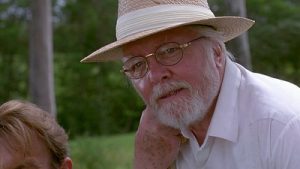
Richard Attenborough as John Hammond in Jurassic Park (1993). Photo credit: Flickr/(CC BY-SA 2.0)
In all, Attenborough appeared in a total of almost 70 films. He also has 14 film credits as a producer and 12 film credits as a director, nine of which were in dual roles. His last screen appearance was in the film musical Joseph and the Amazing Technicolor Dreamcoat (1999). However, his very last film role was that of the narrator in the comedy Puckoon (2002), based on the novel by Spike Milligan. His last film as director was the romantic drama Closing the Ring (2007), starring Shirley MacLaine and Christopher Plummer. His ultimate screen role was a posthumous appearance in archive footage as John Hammond in Jurassic World (2015).
Personal Life
Attenborough married the actress Sheila Sim in Kensington in January 1945. They remained married until his death in 2014. The couple lived the majority of their married life at Old Friars in Richmond Green, London. They had three children, Michael (b. 1950), Jane (b. 1955), and Charlotte (b. 1959). He was also the eldest sibling of the world-famous naturalist and broadcaster David Attenborough. His other younger brother, John, was an executive in the motor trade.
In 1948, Attenborough trained with Chelsea FC when he was told he needed to get in shape for his role of Pinkie Brown in Brighton Rock. He remained a loyal supporter of Chelsea throughout his life, serving as a club director between 1969 and 1982. In 1993, he was made an honorary Life Vice President of Chelsea FC.
Attenborough was awarded a CBE (Commander of the British Empire) in the 1967 Queen’s Birthday Honours List. In 1976, he was made a Knight Bachelor in the Queen’s New Year Honours List. And, in the 1993 Queen’s Birthday Honours List, he was made a life peer. Professionally, he won four BAFTAs and four Golden Globe Awards. He was also awarded a BAFTA Fellowship in 1983 for his lifetime achievements.
In 1988, Attenborough and his wife bought a house and 1700-acre estate on the Isle of Bute in Scotland.
On 26 December 2004, the Attenborough family suffered a great tragedy, when his daughter Jane, his daughter’s mother-in-law, and 15-year-old granddaughter, Lucy, were drowned. They were killed by the massive tsunami that struck much of the Indian Ocean, including the Thai resort of Khao Lak, where they were on holiday.
In 2008, Attenborough published an informal autobiography, which was entitled “Entirely Up to You, Darling”.
Ill-health and Death
In August 2008, Attenborough had a pacemaker fitted following heart problems. Four months later, he was admitted to a London hospital following a fall at home after suffering a stroke. His brother, David, revealed some 3 years later that he had been confined to a wheelchair since his stroke in 2008. In January 2011, with family no longer able to manage the Scottish estate, Attenborough sold “Rhubodach” on the Isle of Bute for £1.48 million.
In June 2012, Attenborough’s wife Sheila Sim was admitted to the professional actors’ retirement home Denville Hall, Northwood, London. A few months later, Attenborough put his beloved Old Friars home on the market. Following the sale, he then moved into Denville Hall to be with his wife.
Richard Attenborough died at Denville Hall on 24 August 2014, five days before his 91st birthday. As requested, his ashes were interred in a vault at St Mary Magdalene church in Richmond with those of his daughter Jane and his granddaughter, Lucy. He was survived by his wife of 69 years, their oldest and youngest children, six grandchildren, two great-grandchildren, and his younger brother David.
Header image credit: Wikipedia Commons/(CC BY-SA 3.0)
